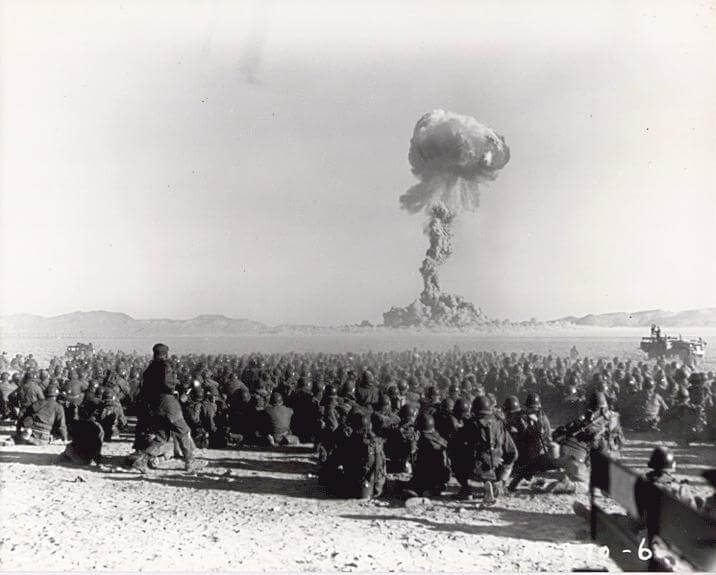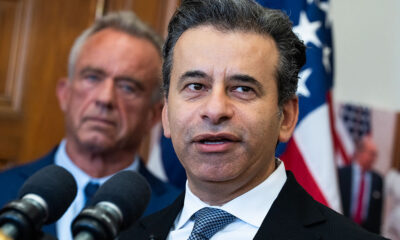Politics
U.S. Resumes Nuclear Testing Plans, Sparking Global Concerns

In a significant shift in nuclear policy, the United States plans to resume underground nuclear testing, a practice that has been on hold since September 1992. President Donald Trump announced the decision on October 30, marking a departure from decades of reliance on a science-based stewardship program managed by the U.S. Department of Energy and its National Nuclear Security Administration (NNSA). This move is perceived as a response to advancements in nuclear capabilities by both Russia and China, who have abstained from testing under the Comprehensive Nuclear Test Ban Treaty, which, despite not being enforced, has established a global norm against such activities.
The implications of reinitiating nuclear tests are profound. Nations with nuclear arsenals may take cues from Washington, potentially leading to a new arms race. The U.S. previously conducted nuclear tests uninterrupted for nearly 50 years, from 1945 to 1992, with only a brief pause in the late 1950s. Resuming testing could undermine decades of efforts to promote disarmament and nonproliferation, contradicting the sentiments of former leaders Ronald Reagan and Mikhail Gorbachev that “a nuclear war cannot be won and must never be fought.”
The U.S. currently possesses approximately 3,748 active and inactive warheads, according to the U.S. Department of Energy. While Trump’s announcement pointed to the arsenals of Russia and China, the exact size of Russia’s stockpile remains unclear since it has suspended data exchanges mandated by the New START Treaty. As of mid-2024, the U.S. Department of Defense estimates that China will exceed 1,000 nuclear warheads by 2030, while some non-governmental organizations suggest Russia’s stockpile may already surpass that of the United States.
Key questions remain regarding the specifics of the proposed testing. Trump’s statement referred to “testing on an equal basis,” but clarity is needed on what constitutes testing in this context. If it implies underground detonations involving critical nuclear materials, it would represent a significant deviation from the current stewardship program focused on non-critical experiments. This ambiguity raises concerns, particularly as the nuclear stockpiles of the U.S., Russia, and China vary significantly.
Trump’s announcement noted that testing will commence “immediately,” although logistical challenges are apparent. The Department of Defense has been assigned to oversee this renewed testing agenda, but the NNSA retains the necessary expertise and authority to conduct the tests. The last underground tests were performed at the Nevada Test Site, where 828 tests took place between 1957 and 1992. Since then, much of the specialized knowledge and infrastructure related to underground testing have deteriorated due to personnel retirements and shifts in focus towards simulation and sub-critical experimentation.
The renewed call for nuclear testing is particularly striking given ongoing diplomatic efforts aimed at reducing regional tensions and conflict. Resuming tests could exacerbate fears regarding nuclear weapon use and spur proliferation among existing nuclear states and nations in vulnerable geopolitical positions. The United States has already allocated over $30 billion this year to enhance its stockpile stewardship, which has effectively maintained the safety and reliability of its nuclear arsenal without testing since 1992.
The environmental consequences of nuclear testing are well-documented. Even controlled underground tests can produce harmful byproducts that affect surrounding areas. A return to nuclear tests would send a destabilizing signal to the international community, potentially intensifying competition among nuclear states.
Instead of reinstating testing, experts suggest that the U.S. should prioritize strengthening monitoring and forensic capabilities to detect and attribute any future nuclear tests globally. The most impactful demonstration of nuclear deterrence may not be the execution of tests, but rather the commitment to nonproliferation and disarmament.
-

 Science2 weeks ago
Science2 weeks agoResearchers Challenge 200-Year-Old Physics Principle with Atomic Engines
-

 Politics2 weeks ago
Politics2 weeks agoNHP Foundation Secures Land for 158 Affordable Apartments in Denver
-

 World6 days ago
World6 days agoBoeing’s Aircraft Production: Assessing Numbers and Challenges
-

 Lifestyle5 days ago
Lifestyle5 days agoTrump’s Push to Censor National Parks Faces Growing Backlash
-

 Lifestyle6 days ago
Lifestyle6 days agoRed Bluff High School’s Elli Nolan Named Rotary Student of the Month
-

 Entertainment5 days ago
Entertainment5 days agoSyracuse Stage Delivers Lively Adaptation of ‘The 39 Steps’
-

 Health2 weeks ago
Health2 weeks agoNeuroscientist Advocates for Flag Football Until Age 14
-

 Lifestyle2 weeks ago
Lifestyle2 weeks agoLongtime Friends Face Heartbreak After Loss and Isolation
-

 Science6 days ago
Science6 days agoAI Misidentifies Doritos Bag as Gun, Triggers Police Response
-

 World2 weeks ago
World2 weeks agoGlobal Military Spending: Air Forces Ranked by Budget and Capability
-

 Health2 weeks ago
Health2 weeks agoFDA Launches Fast-Track Review for Nine Innovative Therapies
-

 Politics4 days ago
Politics4 days agoNFL Confirms Star-Studded Halftime Show for Super Bowl LVIII









